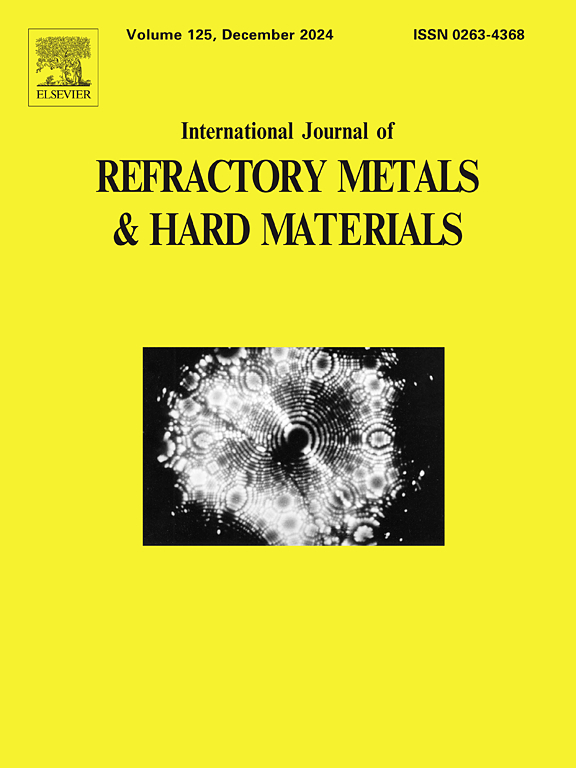Regulation of residual stress in TiAlN coatings by WC-co substrate surface treatment
IF 4.2
2区 材料科学
Q2 MATERIALS SCIENCE, MULTIDISCIPLINARY
International Journal of Refractory Metals & Hard Materials
Pub Date : 2025-01-10
DOI:10.1016/j.ijrmhm.2025.107049
引用次数: 0
Abstract
The surface properties of coatings, especially the residual stress, have a direct impact on the cutting performance and service life of coated tools. In this work, TiAlN coatings are deposited on WC-Co cemented carbide by cathodic arc method. Four surface treatments are carried out on the substrate before deposition, including un-treatment (UT), micro-blasting treatment (MBT), diamond grinding treatment (DGT), mechanical polishing treatment (MPT). The effects of substrate treatment on the surface morphology, mechanical properties and cutting performance of coated tools are studied. The surface morphology of the substrate determines the nucleation sites, which in turn changes the residual stress in the coatings. The order of residual compressive stress (absolute value) in the coatings is MBT > UT > DGT > MPT. In the depth direction, the residual compressive stress gradually increases from the coating surface to the coating-substrate interface. The MBT tools with high residual compressive stress have the high coating adhesion and nano-hardness, which can obtain the longest service life.

求助全文
约1分钟内获得全文
求助全文
来源期刊
CiteScore
7.00
自引率
13.90%
发文量
236
审稿时长
35 days
期刊介绍:
The International Journal of Refractory Metals and Hard Materials (IJRMHM) publishes original research articles concerned with all aspects of refractory metals and hard materials. Refractory metals are defined as metals with melting points higher than 1800 °C. These are tungsten, molybdenum, chromium, tantalum, niobium, hafnium, and rhenium, as well as many compounds and alloys based thereupon. Hard materials that are included in the scope of this journal are defined as materials with hardness values higher than 1000 kg/mm2, primarily intended for applications as manufacturing tools or wear resistant components in mechanical systems. Thus they encompass carbides, nitrides and borides of metals, and related compounds. A special focus of this journal is put on the family of hardmetals, which is also known as cemented tungsten carbide, and cermets which are based on titanium carbide and carbonitrides with or without a metal binder. Ceramics and superhard materials including diamond and cubic boron nitride may also be accepted provided the subject material is presented as hard materials as defined above.

 求助内容:
求助内容: 应助结果提醒方式:
应助结果提醒方式:


